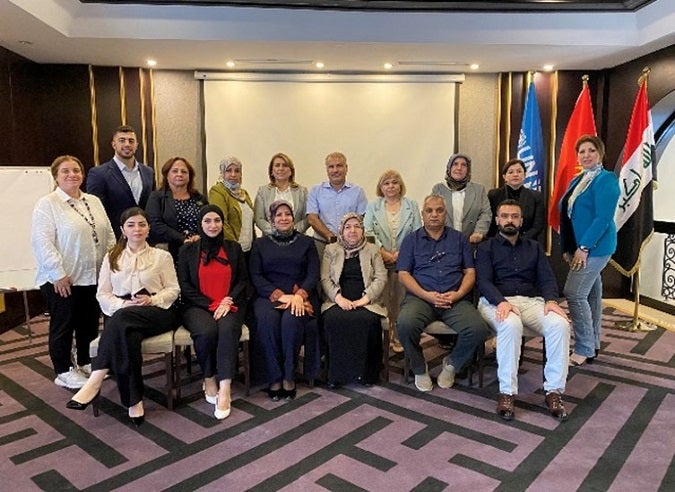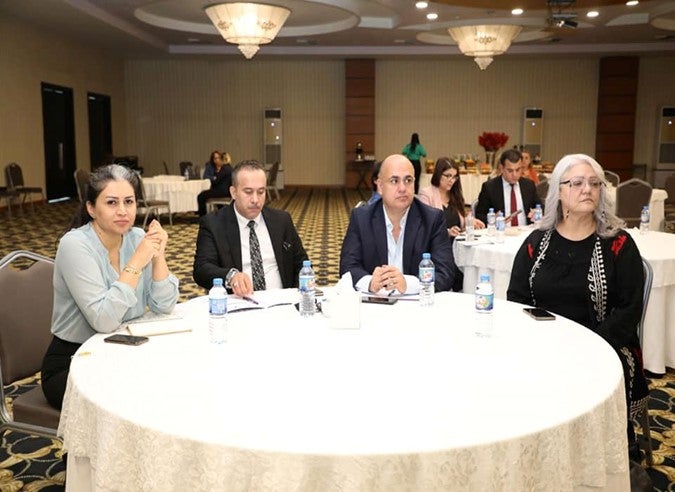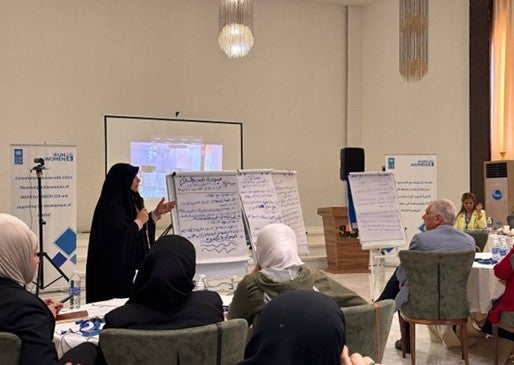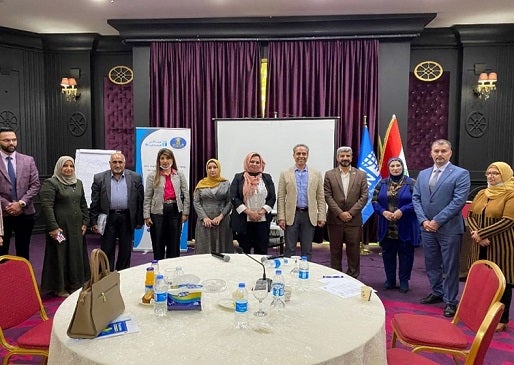Monitoring & Evaluation (M&E) Mechanisms for INAPII
UN Women supported the design and development of a comprehensive monitoring and evaluation framework in partnership with National Gender Machineries and civil society actors, including the 1325 Alliance and Network. The framework outlined the various components of the INAP II, such as strategic outcomes, baseline data and indicators linked to strategic objectives, activities, targets, M&E reporting requirements, budgeting, and the roles and responsibilities of different stakeholders concerning the strategic outputs.
In response to feedback from consultations and activities conducted with the government and civil society, and to address the challenges of manually monitoring the INAP's implementation, the concept of automation was introduced for the M&E framework. Digitalizing the framework and hosting it on an online platform ensures more accurate follow-up, better data flow, and prevents duplication or loss of information.
An INAP II web portal was designed and developed in partnership with the government and civil society to automate the M&E framework. This platform facilitates data entry regarding INAP II implementation progress and achievements by all relevant stakeholders, including ministries, non-ministerial entities, and civil society. It allows them to store all information in an easily accessible online location, rather than on spreadsheets and manually written reports. The portal is a comprehensive tool that enables users to extract and generate progress and annual reports, review indicators, revise and approve data entries, and view various components and activities of the INAP II. As such, it has proven to be a very useful instrument, serving as a performance monitoring tool for all involved entities and increasing their accountability regarding INAP II commitments
Despite the development of the NAP II portal to support the effective utilization of the M&E framework, there has been reluctance to use it. This reluctance could stem from several factors, including the need for focal points within relevant entities to receive training on the portal. Additionally, the portal should have been developed and tested in the first year of INAP to assess its effectiveness and identify areas for improvement. Although the portal is now operational, albeit with some minor technical issues, its introduction comes somewhat late, as the focus has shifted to developing INAP III. Therefore, the platform requires more buy-in to mandate its possible use for INAP III.
At the federal level, the capacities of the Divisions of the Department of Women in various ministries were strengthened in planning, monitoring, evaluation, and budgeting. This step was crucial to enhance their ownership and accountability concerning INAP II. As a result of the technical support provided, government staff working in the various divisions and governorates responsible for the WPS and UNSCR 1325 portfolio were able to successfully identify their roles within the overall NAP. This improved their overall understanding of planning and budgeting, to further support the development of localized and sectoral plans.
A CSO mapping was done which provided an in-depth analysis of the spatial distribution and attributes of diverse CSO’s operating in Iraq focusing on the WPS agenda. It shed light on the geographic spread and operational capacity of these organisations and included reflections from civil society respondents evaluating their capacity and collaboration with regards to the INAP II.
A mid-term evaluation for the INAP II was done to assess the implementation and impact of the NAP II on Iraqi society during the period of 2021-2022, focusing on its three key pillars: participation, protection, and prevention. The mid-term evaluation findings will be used to enlist recommendations to support the development of INAPIII and enhance M&E processes.



